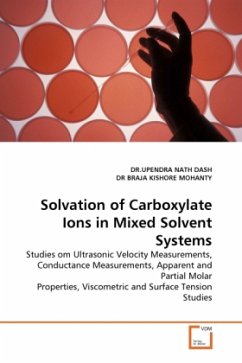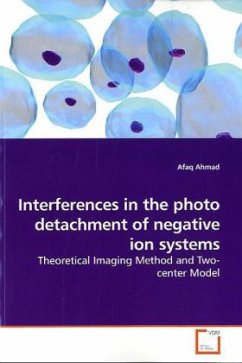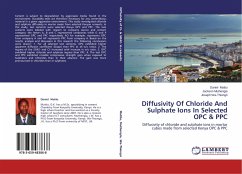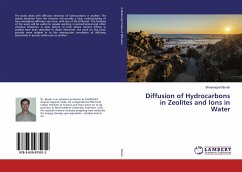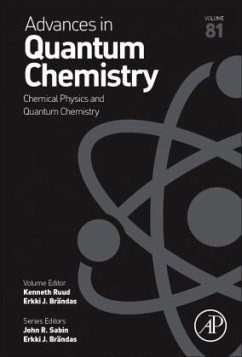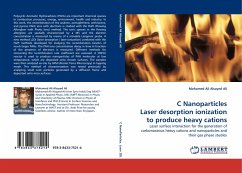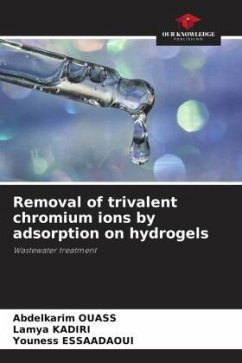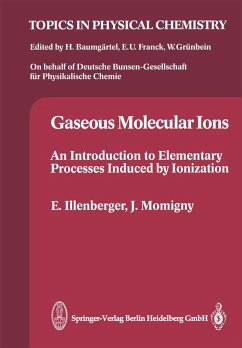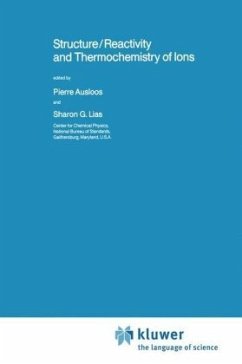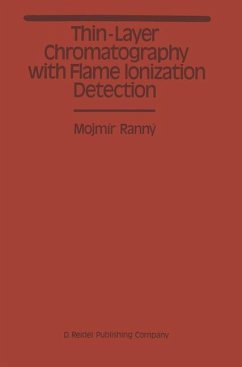
Negative Ions Made by Collisional Ionization
Collisional Ionization Studies of Rubidium Atoms and Small Halogenated Molecules near Reaction Thresholds
Versandkostenfrei!
Versandfertig in 6-10 Tagen
32,99 €
inkl. MwSt.

PAYBACK Punkte
16 °P sammeln!
Negative ions are common in solutions and importantin many biological processes, but they are far lesswell-characterized in the gas phase compared topositive ions. One of the reasons is that it is hardto make a thermodynamically stable negative ion inthe gas phase. Directly attaching a low energyelectron to a molecule could produce a transientnegative ion, which usually autodetaches an electronor fragments to release the excess energy. In thiswork, alkali metal atoms are used to collide withhalogenated molecules in crossed supersonic beams.Electron transfer occurs during the collision and apos...
Negative ions are common in solutions and important
in many biological processes, but they are far less
well-characterized in the gas phase compared to
positive ions. One of the reasons is that it is hard
to make a thermodynamically stable negative ion in
the gas phase. Directly attaching a low energy
electron to a molecule could produce a transient
negative ion, which usually autodetaches an electron
or fragments to release the excess energy. In this
work, alkali metal atoms are used to collide with
halogenated molecules in crossed supersonic beams.
Electron transfer occurs during the collision and a
positive-negative ion pair is produced. The transient
negative ion can release part of its excess energy to
the alkali positive ion in the form of translation
and a stable negative ion could be formed. The
energetics of the collision is studied and the
electron affinities of the negative ions are
measured. This study opens a new pathway to produce
negative ions and provides insight into the electron
transfer mechanism. It is useful to professionals in
the field of gas phase ion chemistry, or anyone else
who may be considering utilizing this method to make
biological negative ions.
in many biological processes, but they are far less
well-characterized in the gas phase compared to
positive ions. One of the reasons is that it is hard
to make a thermodynamically stable negative ion in
the gas phase. Directly attaching a low energy
electron to a molecule could produce a transient
negative ion, which usually autodetaches an electron
or fragments to release the excess energy. In this
work, alkali metal atoms are used to collide with
halogenated molecules in crossed supersonic beams.
Electron transfer occurs during the collision and a
positive-negative ion pair is produced. The transient
negative ion can release part of its excess energy to
the alkali positive ion in the form of translation
and a stable negative ion could be formed. The
energetics of the collision is studied and the
electron affinities of the negative ions are
measured. This study opens a new pathway to produce
negative ions and provides insight into the electron
transfer mechanism. It is useful to professionals in
the field of gas phase ion chemistry, or anyone else
who may be considering utilizing this method to make
biological negative ions.



